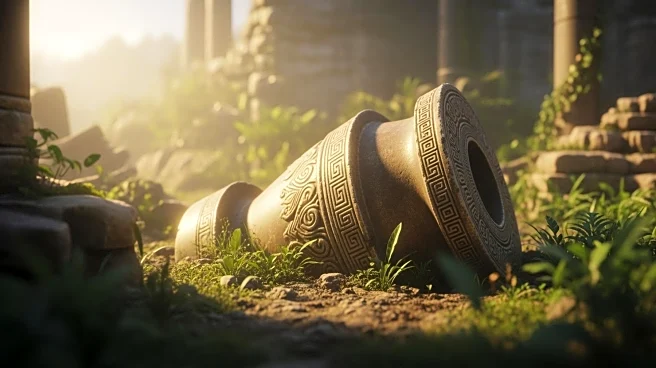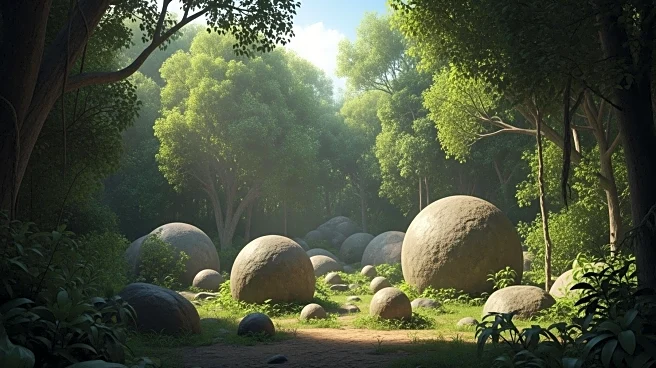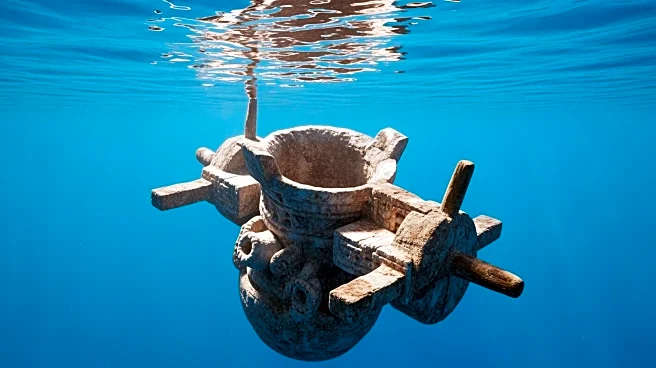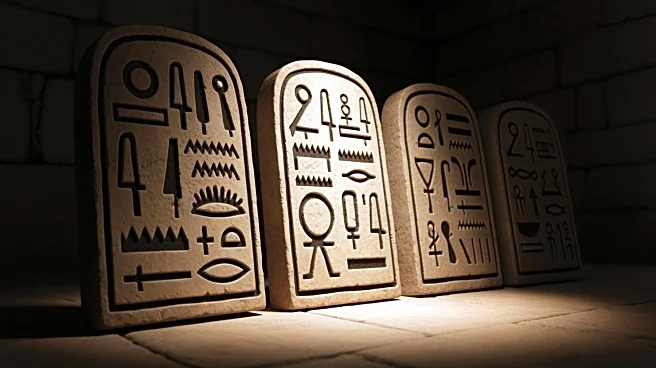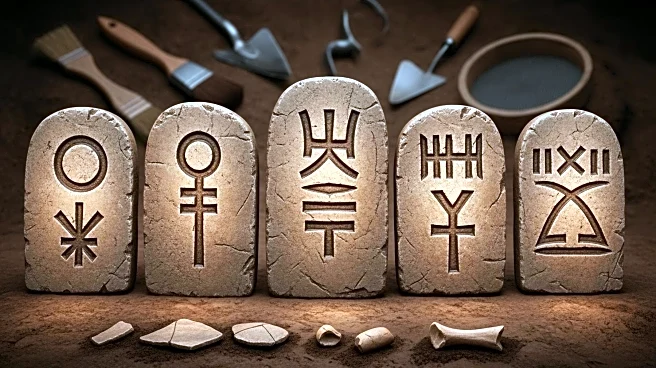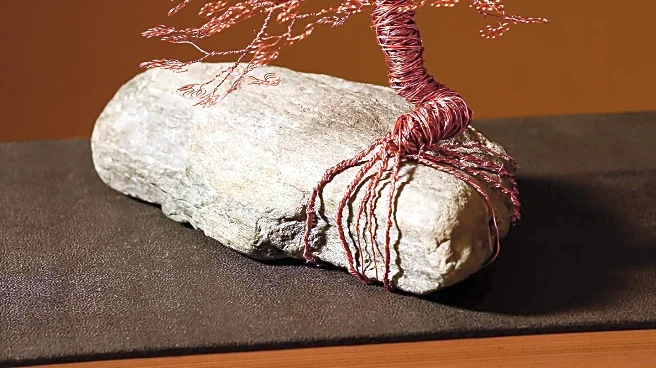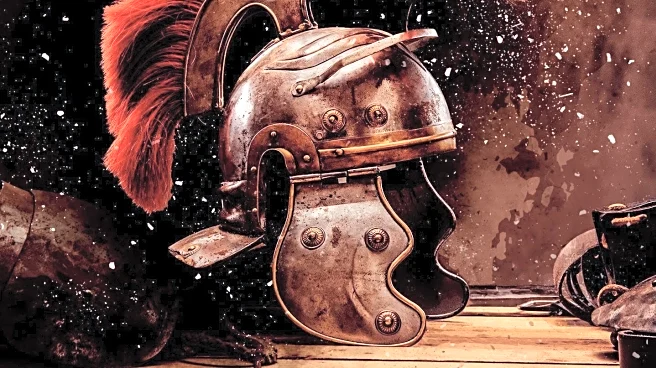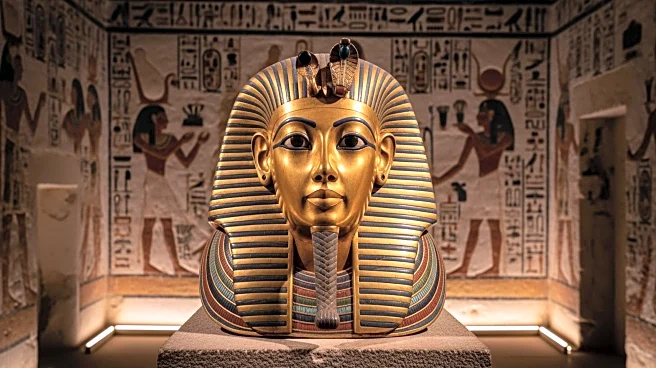What's Happening?
Archaeologists from Mexico's National Institute of Anthropology and History (INAH) have discovered a well-preserved ancient city on Guerrero's Costa Chica, dating back over 1,200 years. Named Paso Temprano, the site features defensive walls, ceremonial
areas, and residential compounds, offering insights into the Epiclassic period of Mesoamerica. The city's architecture, including a 49-meter-long ball court, suggests both practical and spiritual significance, reflecting a sophisticated social hierarchy.
Why It's Important?
The discovery of Paso Temprano provides valuable information about the urban planning and societal structure of ancient Guerrero. The site's preservation and architectural features offer a rare glimpse into the cultural development of the region during the Epiclassic period. The layout reflects a clearly defined social hierarchy, with elevated areas likely occupied by the elite. This find enhances our understanding of ancient societies and their social and political organization.
What's Next?
Ongoing research at Paso Temprano aims to uncover more information about the city's origins and its role in ancient Guerrero. Archaeologists hope to define a local archaeological culture that flourished between the Epiclassic and Early Postclassic periods. The study of the site is expected to yield further insights into the cultural and historical significance of the region, offering answers about the city's original builders and their way of life.
